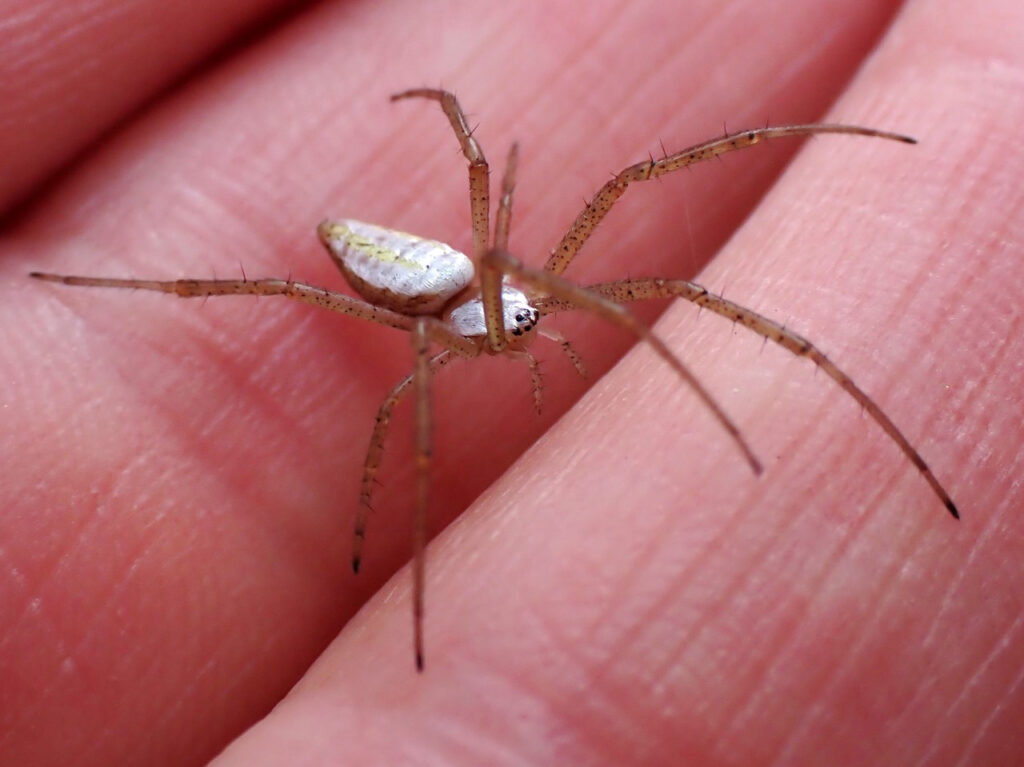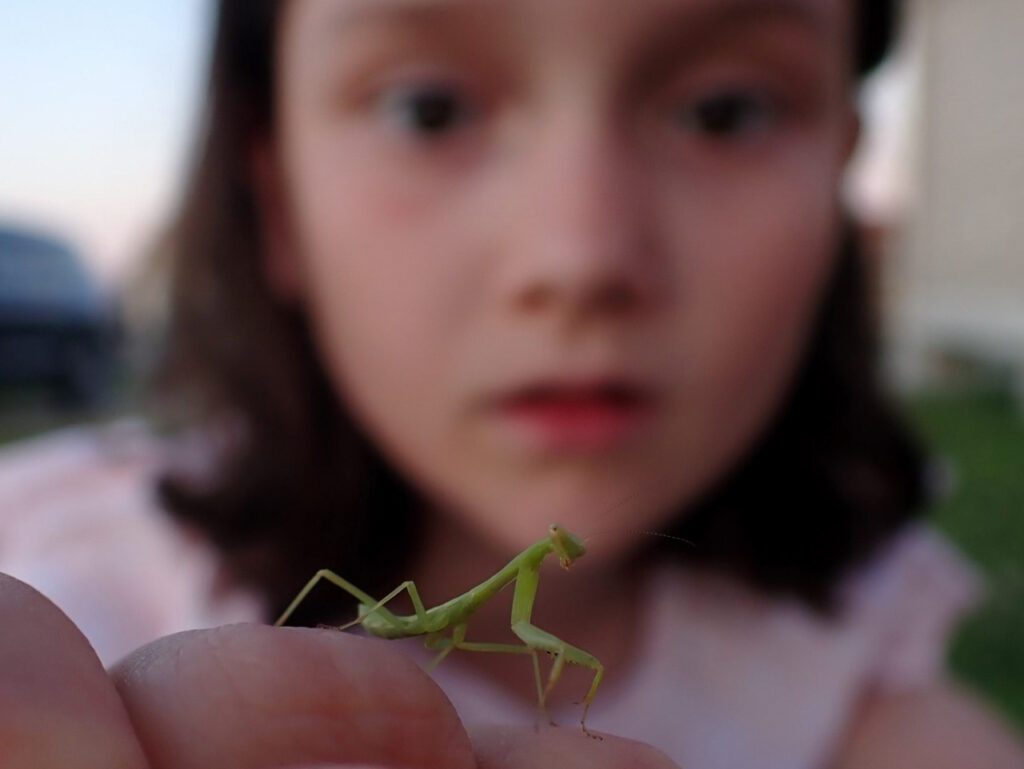By Emily Stone
Naturalist/Education Director, Cable Natural History Museum
As the sheer, white curtain material of my mom’s homemade insect nets unfurled, small children seemed to materialize out of nowhere as if called by the Pied Piper. The wooden dowel handles with bent coat hanger frames were longer than any of the kids was tall.
The nets were light, though, and the long handles allowed us to keep feet and bare legs firmly planted in mowed grass while reaching into the tall field of goldenrod, rattlesnake master, and other flowers of the restored prairies in Honey Creek State Park in southern Iowa.
The adults of the Stone Family Reunion were busy hugging each other hello, setting up camp chairs in the yard, and organizing a taco bar for supper. This gave me time to demonstrate proper sweep netting technique to my cousins’ kids: swish the net back and forth across the tall plants, then fold it over to keep the flying insects in while preparing to catalogue our finds.
I think it was Catherine, age 9, or maybe Freyja, age 7, who caught the first spider. We all crouched around the net for a better look, and I let the spider crawl up on my hand. As she climbed, and I twisted my hand to keep her in view, the light caught her tiny abdomen and it shimmered like white satin. We oohed and aahed.
“What kind is it?” asked Catherine, with her eyes transfixed on our new friend. I wracked my brain to match the narrow, slightly teardrop shape of this spider with eight equal-length tan legs to any of the spider groups I knew. Crab spiders are easy to identify with their larger pair of front legs. Wolf spiders have two body segments roughly equal in size. Jumping spiders are hairier. Cellar spiders are leggier.
I peered at this little spider’s face, trying to find something I could tell the kids. The two little sensory appendages under her chin (called pedipalps) were uniformly thin and looked simply like shorter legs: a female. In male spiders, the last segment of the pedipalp is swollen and looks like little boxing gloves.
I looked around the cluster of little girls and their brothers, all at prime fairytale age. Then I looked back down at the young, female spider, shimmering in the sun…” She’s a princess spider!” I exclaimed, and suddenly the air crackled with magic. Even Rosemary, age three, with eyes full of awe, held out her hand to let the tiny spider tickle her fingers.
The kids ran off with the nets to catch more critters while I quickly uploaded a photo of the spider to my SEEK app. “We believe this is a member of the order Entelegyne Spiders,” was all it could tell me.
“Princess Entelegyne is her name,” I told the crew when they rushed back with nets full of more strange and colorful creatures. And then we got to work, picking through the nets and corralling the rest of our menagerie into little plastic “see boxes” with magnifiers in the lids.

Before I collapsed into my bed that night, I posted a photo of the spider to the ID Request section of BugGuide.net. By 8:30 a.m. the following morning, I had an expert identification: Banded Garden Spider, Argiope trifasciata. Most of the photos were of large, female spiders with fat, black, yellow, and white striped abdomens, and elegant, banded legs. Spider royalty, if you ask me! They build the most beautiful round webs with a shiny lightning bolt down the center, but usually aren’t noticed until late summer. This was early July.
Males are the same shimmering white as the spider we found, but only grow to 5 mm long. Our catch was twice that size already. So, I surmised, Princess Entelegyne was a juvenile female, and wasn’t building conspicuous webs yet. In a few weeks, after a few molts, she would don the colors and stripes of her kind and finally debut in a form that would make people sit up and take notice.
The prairie was full of life, and our nets caught the magic. There was a tiny male lynx spider with big black pedipalps; a yellow crab spider with round abdomen and large front legs; and a young praying mantis with swivel head and giant forearms. We marveled at the sharp beak of a robber fly and admired the colorful markings on a bush katydid. Tiny grasshoppers elicited laughs of surprise as they vanished ahead of poking fingers.
During the round of goodbye hugs, Catherine gave me a serious look. “Thank you! I learned so much from you.” I grinned. Some of the insects and spiders they’d caught were ones I’d never seen either. “Thanks to your excellent bug catching,” I told her, “I learned lots of new things, too!”

Emily’s award-winning second book, Natural Connections: Dreaming of an Elfin Skimmer, is now available to purchase at www.cablemuseum.org/books and at your local independent bookstore, too.
For more than 50 years, the Cable Natural History Museum has served to connect you to the Northwoods. The Museum is now open with our exciting Growing Up WILD exhibit. Follow us on Facebook, Instagram, YouTube, and cablemuseum.org to see what we are up to.
